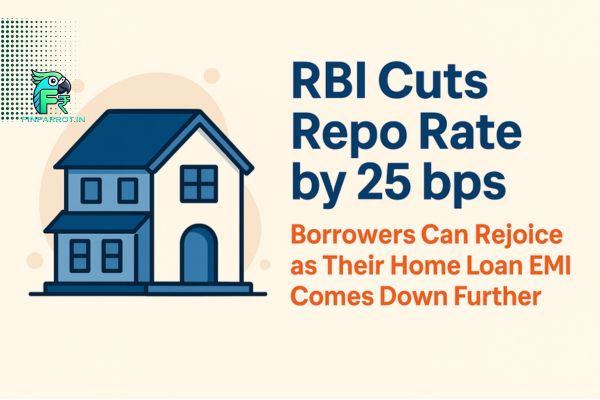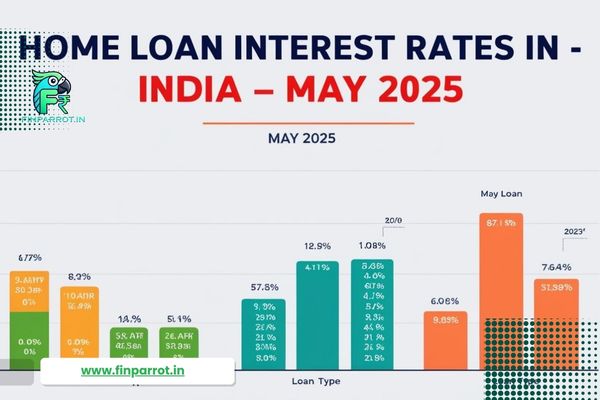Introduction
The enthusiasm for stepping into higher education faces challenges because college costs are steadily rising. Students need “Smart Student Borrowing: Avoid Debt Trap & Secure Your Future” as their essential guide, which explains smart approaches to managing student financing.
We assist students with educational financing choices to let them concentrate on their studies and their future. This paper examines government student loan conditions combined with information on SBI student loans and HDFC student loan programs. The article provides guidelines for student loan acquisition alongside instructions about effective student loan applications that prevent hidden costs or expensive fees from arising. Through our expert advice, you will learn effective borrowing techniques that will defend your future prospects and help you maintain academic success. This article offers an introduction to securing debt-free opportunities for tomorrow.
Are Loan Apps Safe? How to Protect Your Data – Read more
Understanding the Student Loan Landscape
Better educational success requires knowledge about available options alongside their respective difficulties, which you should obtain before beginning your studies.
Government Student Loans
- Public Sector Banks: Supply loans that are more reasonably priced than other alternatives.
- Vidya Lakshmi Portal: Provides educational funding through schemes with affordable interest rates and adaptable payment schedules.
- Eligibility: These government student loans work to assist students regardless of their background. For example, a Central Bank of India student loan can be an excellent option, as many government schemes ensure lower student loan interest rates and longer repayment tenures.
Private Bank & NBFC Loans
- Banks and NBFCs (Non-Banking Financial Companies): Also offer student loans.
- Specializations: Some NBFCs specialize in funding education abroad or specific courses like MBBS for students.
- Terms: These loans are often easier to obtain but can come with higher processing fees, stricter terms, and steeper student loan interest rates. Options like the HDFC student loan are popular—but always compare their terms with government schemes, especially if you’re considering a student loan app in India.
Instant Loan Apps
- Convenience Factor: Many students are tempted to use an instant loan app for students.
- Caveat: Although these promise quick disbursal—like an instant 10,000 loan for students—they often hide high fees and soaring interest, which can turn an instant loan for students into a long-term burden.
Understanding Collateral and Loan Security
Definition: Collateral is an asset that a borrower pledges to a lender as security for a loan. If the borrower defaults on the loan, the lender has the legal right to seize and sell the collateral to recover the outstanding loan amount. Understanding collateral is crucial for making informed borrowing decisions.
Types of Collateral:
- Property: Residential or commercial properties are commonly accepted as collateral.
- Fixed Deposits: Fixed deposits held with banks can also be pledged.
- Life Insurance Policies: Some lenders accept life insurance policies as collateral.
- Shares and Securities: Stocks, bonds, and other securities can also be used.
Risks of Pledging Collateral:
- The most significant risk is the potential loss of the asset if you fail to repay the loan.
- The value of the collateral must be equal to or greater than the loan amount.
Secured vs. Unsecured Loans:
- Secured Loans: Require collateral, which reduces the lender’s risk, often resulting in lower interest rates.
- Unsecured Loans: Do not require collateral but typically have higher interest rates due to the increased risk for the lender.
Co-applicant vs. Guarantor:
- Co-applicant: A person who shares the responsibility of repaying the loan along with the primary borrower. They are jointly liable for the debt.
- Guarantor: A person who promises to repay the loan if the primary borrower defaults. They are only liable if the borrower fails to repay.
Before pledging any asset as collateral, carefully consider the risks and ensure you have a solid repayment plan.
The Pain Points: Why Students Get Trapped in Debt
Many students fall prey to poor borrowing decisions due to a lack of information and proper planning. Common pitfalls include:
- Over-Borrowing: Borrowing more than necessary leads to a heavier debt burden.
- High Interest & Hidden Charges: Be it the SBI student loan interest rate or concealed fees in an instant loan app for students, costs can quickly spiral out of control.
- Poor Planning: Without using a student loan EMI calculator or student loan calculator, your monthly payments might exceed what you can afford.
- Multiple Loans: Applying for several loans—like using multiple platforms to apply for a student loan—can harm your credit score and increase your financial stress.
- Credit Score Impact: Missed payments can lower your credit score, making it harder to secure future financial opportunities such as a Bank of India student loan for other needs.
Smart Borrowing Tips: Step-by-Step Strategies
Tip 1: Calculate Your True Needs
- Assess Expenses: List your tuition fees, accommodation, and living costs. Use a student loan EMI calculator to estimate your monthly obligations.
- Plan Your Budget: Make sure you’re borrowing only what you truly need.
- Key Message: Borrow only what you really need to avoid unnecessary debt.
Tip 2: Choose the Right Lender
- Government First: Prefer government student loans for their lower interest rates. Explore options on the Vidya Lakshmi Portal.
- Compare Alternatives: If opting for a private lender or NBFC, research well-known services such as the HDFC student loan. Be cautious with an instant loan app for students; ensure it’s truly among the best student loan apps before proceeding.
- Remember: A smart choice today leads to a secure financial future.
Tip 3: Understand Loan Terms Thoroughly
- Interest Details: Verify if the loan accrues simple or compound interest—especially during the moratorium period. Unpaid interest might be capitalized, increasing your overall debt.
- Hidden Fees: Check for any processing fees or loan foreclosure charges.
- Repayment Conditions: Familiarize yourself with all terms, such as the conditions to apply for study loan forgiveness if you encounter difficulties.
- Pro Tip: Always read the fine print to understand exactly what you’re signing up for.
Tip 4: Use Financial Planning Tools
- Loan Calculators: Leverage both a student loan calculator and a student loan EMI calculator to get a clear picture of your future payments.
- Visual Aids: Consider creating or referencing charts that compare metrics like the SBI student loan interest rate versus other options. This can help in visualizing the differences between various lenders.
- Action Item: Use these tools to guide your financial decisions and avoid surprises later.
Tip 5: Explore Alternative Funding Options
- Scholarships and Grants: Before borrowing, research all possible non-loan avenues. Many students qualify for various grants and scholarships, reducing the amount you need to borrow. Visit the National Scholarship Portal for available programs.
- Part-Time Work: Earning a steady income through part-time jobs or internships can significantly reduce your reliance on loans. Even a small monthly income can help cover part of your EMIs.
- Takeaway: Prioritize non-repayable funding options whenever possible.
Tip 6: Be Aware of Loan Scams and Fraud
- Verify Lenders: Always confirm the legitimacy of any lender by checking the RBI website and trusted sources. Avoid any offer that guarantees an instant 10,000 loan for students without proper documentation.
- Spot Red Flags: Be cautious of lenders demanding upfront fees or those that promise too-good-to-be-true terms.
- Internal Resource: Learn more about protecting your finances in our “How to Report Fake Loan Apps & Get Your Money Back” post.
Tip 7: Plan for a Secure Financial Future
- Career Considerations: Choose courses with high employability to ensure your future income can support your repayments. Evaluate if the course you choose offers good prospects to pay off your student education loan.
- Build Credit Wisely: Avoid taking multiple loans at once to maintain a healthy credit score, which is vital for future loans.
- Long-Term Strategy: Consider the implications of an instant loan for students on your overall financial health. Future plans, such as buying a home or starting a business, might be affected by your current borrowing choices.
- Advice: Your financial decisions today have a lasting impact. Choose wisely to avoid the long-term consequences of a debt trap.
NBFCs: Risks and Rewards
NBFCs play an important role in the student loan market by filling gaps when traditional banks hesitate to lend. Here’s what you need to know:
Benefits:
- Many NBFC education loan providers offer quick disbursal and may specialize in areas like student loans for studying abroad or student loans for MBBS.
- They often have more flexible terms, making them a viable option if you do not meet the strict criteria of government banks.
Risks:
- NBFCs generally have higher processing fees on education loans and steeper student loan interest rates compared to government options.
- The convenience of an instant loan app for students from an NBFC might come at a significant long-term cost.
(Pro Tip: Always compare the SBI student loan interest rate and other government options against NBFC offerings before making a decision.)
Real-World Example: A Student’s Journey
Consider the experience of Rahul, an engineering student from Mumbai. Initially, Rahul opted for an instant loan app for students that promised quick disbursal of funds. However, he soon discovered that the instant 10,000 loan for students he received came with sky-high fees and hidden charges. His monthly obligations, calculated using a student loan EMI calculator, were far beyond his capacity given his part-time income.
Realizing the strain on his finances, Rahul re-evaluated his options. He switched to a government student loan scheme by applying through the Vidya Lakshmi Portal. With the lower SBI student loan interest rate and structured repayment plans, Rahul managed to ease his financial burden significantly. His story highlights the importance of researching and comparing different options—whether you’re wondering how to get a student loan or how to apply for student loans.
FAQ’s
Are instant loan apps safe for students needing quick funds?
While convenient, many have high-interest rates and hidden charges—always verify legitimacy before applying.
What’s the best way to compare student loan options?
Use loan calculators, check interest rates, repayment terms, and prioritize lenders with lower processing fees.
Conclusion: Empowering Your Future Through Smart Borrowing
The avoidance of student loan debt depends mainly on strategic borrowing tactics. Remember these core strategies:
- Evaluate Your Expenses: Determine the amount of debt you actually require.
- Choose Trustworthy Sources: Select your student loan from reliable sources such as government schemes via the Vidya Lakshmi Portal or proven NBFC education loans.
- Use Financial Tools: Forecast your student loan EMIs using student loan calculators and EMI calculators.
- Explore Alternatives: Investigate scholarship opportunities, grant options, and part-time employment to avoid excessive borrowing.
- Read the Fine Print: Ensure you understand every detail before signing any documents and be vigilant against fraudulent activities.
- Plan for the Future: A solid plan—including career planning and maintaining a good credit standing—ensures that informed student loan decisions transform debt into an investment for your future.
For further financial management insights and helpful advice, please refer to our related post:
How to Report Fake Loan Apps & Get Your Money Back Read more
According to these wise borrowing practices, you will establish a solid financial base while prioritizing your academic development and professional growth. Your current choices—with complete information—will allow you to have a debt-free future.
Happy studying and smart borrowing!
Why I Chose DSA for an Instant Personal Loan – Discover why a DSA (Direct Selling Agent) can be a better choice for securing a personal loan. Read more















